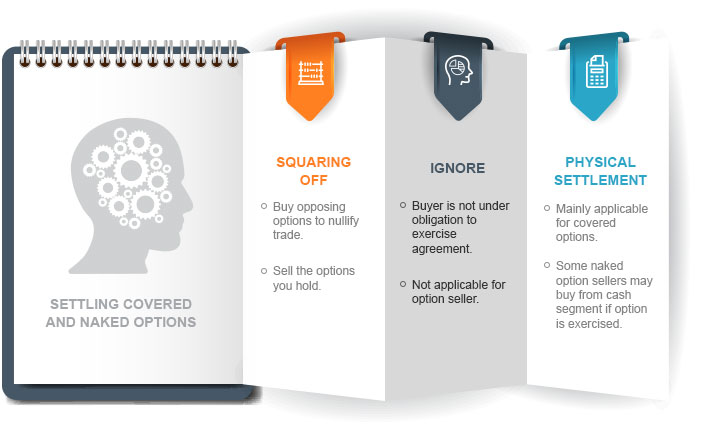Naked Options are options you sell that are not covered by an opposing long position.
It can provide you an opportunity to be paid while you wait for an overpriced stock to drop to a price worth buying.
The common warning is that it leaves you open to unlimited risk. We’ll explore that risk in a bit to determine if this claim is true.
There are several other risks to consider.
This strategy requires a good working knowledge of options trading and a lot of discipline because it’s easy to go over board when you see the income rolling in.
Let’s say you discover a dividend paying stock that you want to buy. The problem is that your research tells you it’s overpriced.
You sell a put option (1 contract will buy 100-shares if exercised) for a credit.
If the stock falls to or below the put option’s strike price the option will be exercised and you will buy the stock at the strike price.
You cost basis for the stock is the strike price minus the credit you received, so you’ll end up buying the stock for even less.
If the stock doesn’t fall to the strike price the naked put option expires worthless and you keep the credit.

Most books and tutorials characterize naked options as a risky strategy because it leaves you open to unlimited risk.
The reason they say unlimited risk is because no one knows how far a stock will drop.
I don’t see that as unlimited risk. You know exactly how much money you will need to shell out if the naked option is exercised: (The strike price) x (number of contracts) x (100 shares per contract).
Don’t get me wrong. It could be a BIG risk if the stock price falls to 0. In that case you’ll pay for the stock at its strike price and get nothing in return. But that’s not unlimited.
And you are capping the time allowed for the stock to drop.
I guess you could say that the risk can look unlimited compared to your account size if you open too many naked put option contracts, they all get exercised, and you don’t have enough money in your account to cover your obligations.
Here are the risks to naked options:
Too many naked put positions open.
Undisciplined investors who don’t understand how options trade, don’t understand market volatility, and don’t understand position sizing will open too many naked options positions.
They only look at the credit pouring in to the account.
The risk is that all of these open positions may get exercised during a broad market sell off resulting in assignment.
You sell too many contracts.
You get greedy and sell more contracts than the shares you want to buy.
Remember each contract results in buying 100-shares.
You always need to remember how that affects your portfolio allocation.
The stock price falls for a reason.
This can also be called “not the stock you thought it was.”
You’ve done great research and determined the company is worth buying, but at a lower price.
You sell a put option for a strike price below your target buy price.
There’s a problem, unknown to you. Let’s say the company has product problems that affects its cash flow and they cut their dividend.
The stock price falls off a cliff. Way below your strike price. Your naked put option gets exercised.
Now you’re stuck with buying a stock for more than it is really worth. In fact, it’s a stock you don’t really want.
Broad market sell off.
A broad market sell off drags all stocks down in price. The drop could pull the price down below your strike price.
You could have bought the stock cheaper by waiting out the market drop. Instead you end up paying above market prices.
Naked put positions on the wrong stocks.
This strategy is supposed to be a way to buy a stock below your target buy price. This stock is one you want to buy because you’ve done your research.
Undisciplined investors, again lured into what they think is easy credit, end up selling put options on stocks that have juicy option premiums. They don’t really want to own the stock.
Volatility.
Undisciplined investors who don’t really want to own the stock sell a naked put option thinking they can allow time value to waste away and buy the option back for a profit.
Then the stock price starts to fall, approaching the strike price.
They buy the option back and pay a LOT of money to do so.
BIG loss. Why?
Falling stock prices usually come hand-in-hand with higher implied volatility.
Carefully research your stocks. Only sell naked put options on stocks you truly want to own.
Carefully pick your strike price. It should be placed to ensure you are really buying this stock at a great value.
Carefully calculate the number of contracts you want to sell.
You want to own this stock so you need to ensure you have the money to pay for it.
Figure out how many shares you want to buy.
1 put option contract = 100 shares, so divide the number of shares you want to buy by 100. Round that number DOWN to the nearest whole number.
This is the number of naked options contracts to sell.
Note: This strategy is not for you if your portfolio size is limited and you typically buy less than 100 shares in stock.
Listen to the market.
Do not sell naked options if the market is in a downtrend.
Chances are pretty good that you’ll be able to buy the stock for a lower price than what ever you pick for your strike price.
One final comment.
You should not be doing this if you are secretly hoping the option expires worthless.
This is supposed to be a strategy to buy a stock you want below your target price.

